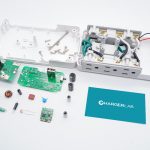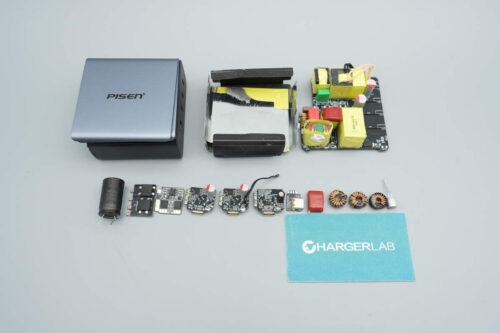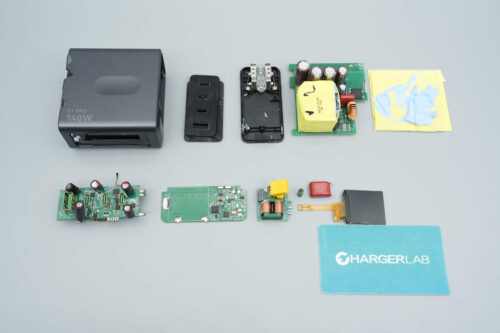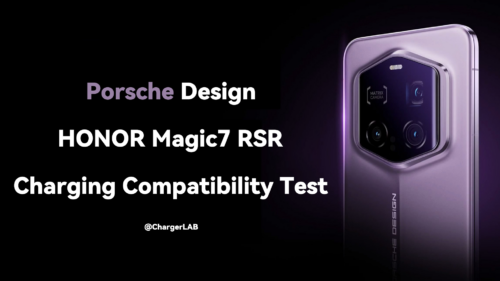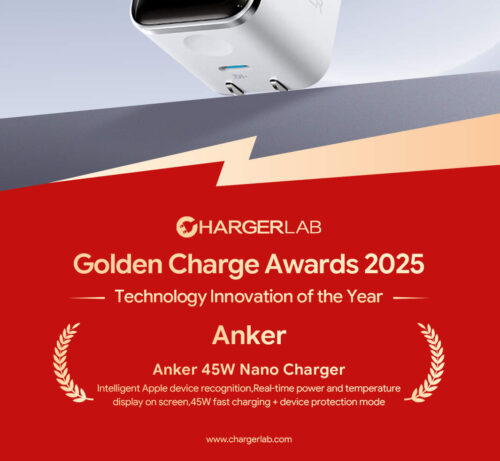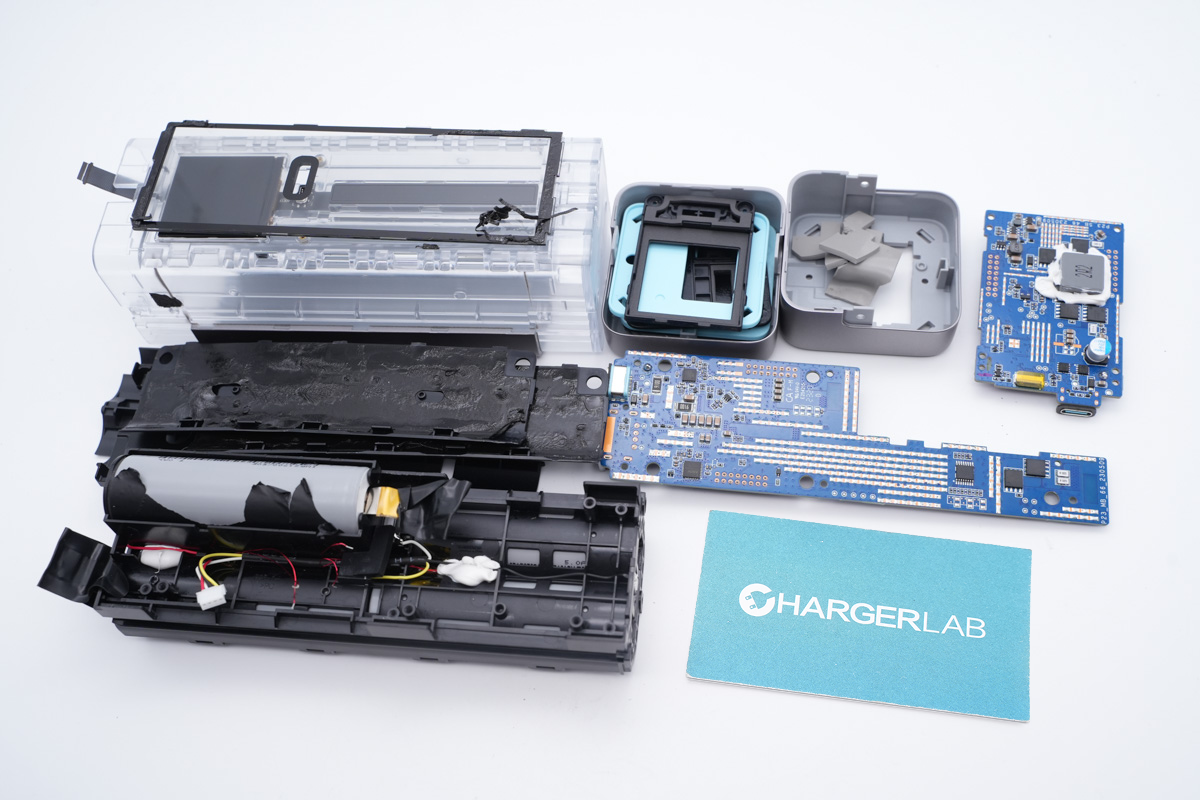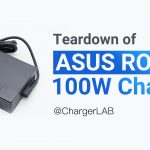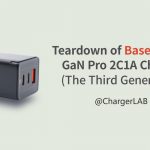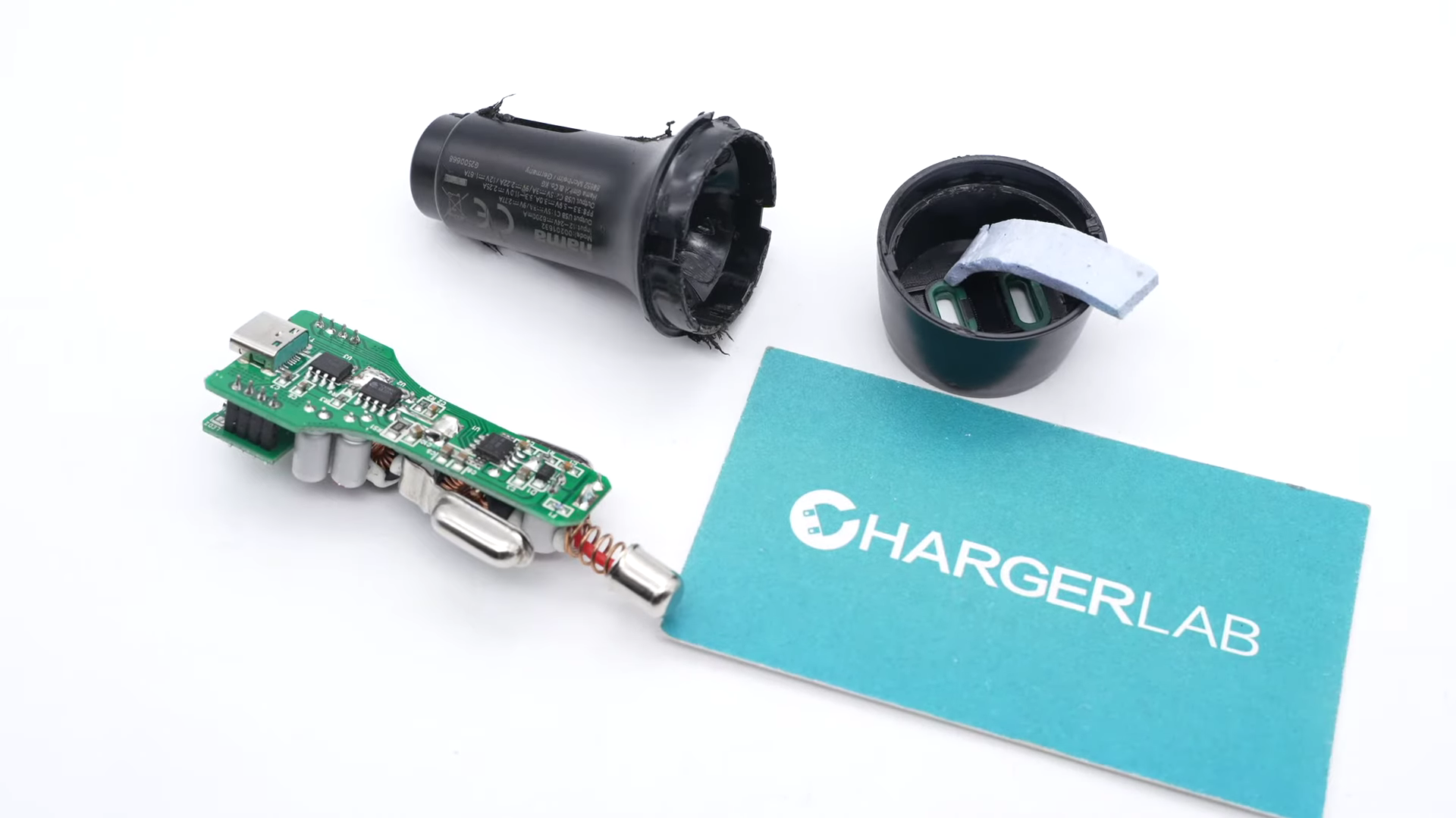Recently, ChargerLAB got an ANZONTO Dual Socket Shelf with Faster Charger. Model is WMN03C2.
Compared with the traditional power strip, it has built-in USB ports and can support 18W.
And it also has two plastic plates that can hold your devices while charging.
So, the bedroom and kitchen might be the best place to use it. Then, ChargerLAB will tear it down to see what’s inside.
1. Appearance

Here is the brand logo, product name, and product picture.

You can use it in the living room, bedroom, kitchen, and other places.

The specs are printed on the side.

Open the box. It contains the product, two support plates, cable ties, and wall nails.

You have to install those two plastic plates by yourself.

The support plates are fixed to sockets by clips.

Two AC sockets, one USB-A and one USB-C are on the front side, and it’s printed with “ANZONTO.”

An LED light is next to the USB-C, and it’ll light up after connecting to the power.

Here are three AC sockets on the side.

And another three AC sockets are on the other side.
That’s to say; it can charge up to ten devices at the same time.

This is the switch that controls two USB ports.

Plug it into the wall outlet.

The back shell is fixed by screws.
Model: WMN03C2
Max Rated Power: 1875W (125V15A)
Input Voltage: 100-250V~50/60HZ
USB-A output: 5V3A, 9V2A, 12V1.5A
USB-C output: 5V3A, 9V2A, 12V1.5A
Total USB Output: 18W Max
It has passed the FCC certification.

There is also a transparent opening at the bottom of the socket with built-in lighting, which is convenient for users to find it out at night.

This is the same built-in lighting as another support plate.

The length is 145.23mm (5.17 inches).

The width is 78.06mm (3.07 inches).

The thickness is 40.36mm (1.57 inches).

This is how you hold it.

The weight is 251g (8.85 oz).

Total weight is about 422g (0.93 lb).

Use ChargerLAB POWER-Z KT002 to test the protocol of USB-A; it supports Apple 2.4A, Samsung 5V2A, DCP protocol, and QC2.0/3.0, AFC, FCP, PE2.0 fast charging protocol.

The USB-C supports QC2.0/3.0, AFC, FCP, PE2.0, PD3.0, PPS fast charging protocol.

The USB-C also supports three fixed PDOs of 5V3A, 9V2A, 12V1.5A, and two PPS of 3.3-5.9V3A, 3.3-11V2A.
2. Teardown

Remove the shell.

We can see the AC socket modules are fixed on both sides.
An input PCB is fixed in the middle, and the plug is soldered on the small PCB.
The USB module is at the bottom.

The USB module is connected to power by the red and black wires.

Remove those two PCBs.

Take a closer look at the thick wires.

There are fuse and three varistors for input overvoltage and overcurrent protection.

The fuse is wrapped by an insulation tube.

Close-up of three same varistors.

This is the front side of the USB module, the boundary between primary and secondary circuits is obvious.
There are lots of gaps between components. So, the heat can be dissipated more efficiently.

And there are a bridge rectifier and some chips on the back.
ChargerLAB found that the USB module adopts the quasi-resonant switching and the secondary step-down circuit (DC-DC). And the protocol chip will intelligently distribute the output.
Then, let’s start from the input to analyze every single component.

The fuse, electrolytic capacitors for high-voltage filtering, axial inductor, transformer, power supply capacitor of master control chip, and Y capacitors are on the input side.

Close-up of the switch button.

Rated current of the time-delay fuse is 2A.

Close-up of ABS10 bridge rectifier.

One of the electrolytic capacitors for high-voltage filtering comes from Junkang.
400V 15μF.

The other is 400V 18μF.

Close-up of axial Inductor.

The specs of the power supply capacitor of the master control chip are 50V 4.7μF.

The master control chip comes from On-bright OB2571T.

Close-up of transformer.

Close-up of Y capacitor.

The filter capacitors, inductors, and other components are on the output side.
The USB-C receptacle is welded on a small PCB.

The synchronous rectifier controller comes from On-bright OB2004 with high integration, which supports 3-12V output.

The specs of a solid capacitor for output filtering are 16V 560μF.

The specs of another solid capacitor are also 16V 560μF.

Close-up of indicator light.

Close-up of the LED light.

The small PCB where the USB-C receptacle is located is equipped with a step-down protocol IC and MOSFET.

The step-down protocol IC can control the output voltage of the 1A1C interface. Model is ismartware SW3517S.
This is a highly integrated dual-port protocol IC with multiple fast charging protocols, which integrates a 5A high-efficiency synchronous step-down converter. The maximum output is 100W (20V5A).
Only a few external components are needed to form a complete high-performance charging solution.

Close-up of the step-down inductor.

The dual NMOSFET comes from Ruichips RU30D20 and is used for the output distribution.
Its withstand voltage is 30V and packaged by PDFN3333.

Close-up of the USB-C receptacle.

Close-up of the USB-A receptacle.

OK, that’s all for the Teardown of ANZONTO 18W Socket Shelf. Let’s take a “family portrait.”
Summary of ChargerLAB
This product is designed specifically for your home.
It needs to be fixed in the wall because we can see attached nails are inside the box. So, it’ll take up your space.
It’s like a special expansion of your wall outlet, which can expand eight AC sockets and two USB ports that support 18W fast charging.
In addition, it also has two plastic plates and an LED light at night, which is very practical.
We found the AC sockets are independently designed on both sides and fixed by the clips. The main chip of the USB module is On-bright OB2571T and OB2004. And the output voltage is controlled by ismartware SW3517S.

